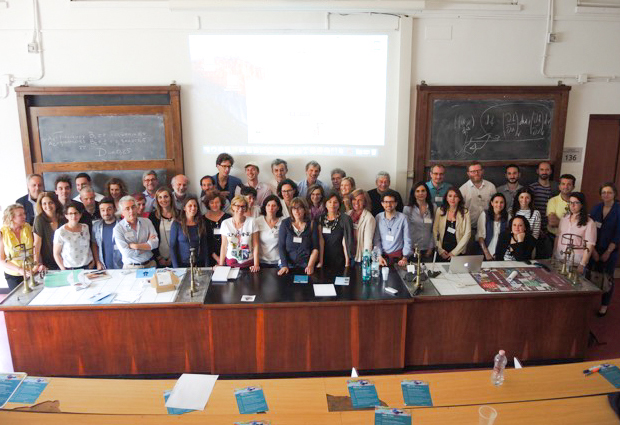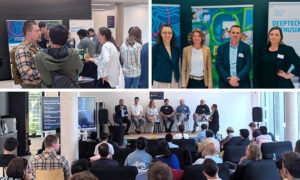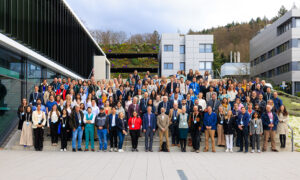
Italian interconnections
Rome was the destination for 80 alumni and people from their networks to participate in an ‘EMBL in Italy’ event on 27 May to learn about the focus of researchers at EMBL’s Monterotondo site

The ‘EMBL in Italy’ event brought EMBL alumni together to share their research directions and spread the word about EMBL’s opportunities and resources.
EMBL’s early excitement
 Marco Tripodi
Marco Tripodi
Then: Postdoc (1981–4) Cortese group, Heidelberg
Now: Professor, La Sapienza University, Rome
EMBL was already an exciting place in the early 80s: both the institute and the gene expression programme were very young, powered by a small but vibrant community of around 200 scientists. We all had the feeling of being part of something new and exciting, which would allow us to open new ‘boxes’ of knowledge without the pressure to deliver specific applications.
Breaking boundaries
Strong in my memory are “wow!” conferences covering the discovery of the first oncogenes, as well as Walter Gehring’s landmark talk on Antennapedia. This spirit of going beyond current knowledge and always preparing for the next steps has shaped my approach to science. During my EMBL years, I studied transcription mediated by polymerase 2 and 3, mostly in liver cells. Like most alumni, I specialised after leaving EMBL – but I also kept one eye on the ‘bigger picture’. I still work on the same tissue, but new technologies and ‘big data’ are allowing us to dig much deeper into the complexity of the processes.
Next-generation scientists
Many of the talks at the event were focused on networks of molecules: I find this topic absolutely fascinating! As a professor, I want to convey this fascination for learning to my students and in turn make a strong contribution to training the next generation of motivated young scientists.
Connecting ideas and discovery
 Valeria Carola
Valeria Carola
Then: EMBL Postdoc (2003–9) Gross group, Monterotondo
Now: Team leader, Santa Lucia Foundation, Rome
Five years as a postdoc in Cornelius Gross’ group have proven crucial to my career as a researcher. They were also extremely enjoyable from a personal perspective: EMBL really is a place that cares for its staff and where you are certain to meet great people.
Creative connections
Before my postdoc, my research focus was on behaviour and I used very little molecular biology. Studying gene expression and its links to the environment with Cornelius Gross allowed me to bridge that gap and make contributions to understanding the connections between experiences animals have as youngsters and their behaviour later in life. Cornelius is a great inspiration and a very important colleague.
Bringing light to behaviour
My current work focuses on the impact of the environment on young animals and the onset of mental health disorders later in their lives. We proved that mice pups who grow up in an aggressive environment tend to be more prone to cocaine addiction as adults; on the other hand, pups who grow alone, with little social interactions, tend to be more prone to depression in their adulthood. In both cases we are able to link the behaviours to specific gene expression patterns, and that could give us clues to understanding similar patterns in humans.


